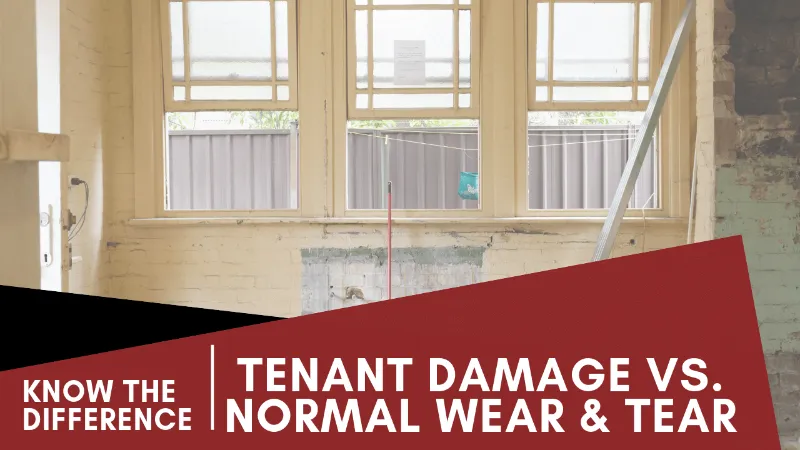
Unless a different time period is specified in the lease, landlords in Lakewood, Colorado are required to return their tenant’s security deposit within 30 days of a tenant moving out. How do you know whether to charge that deposit for damage and repairs?
It’s important to know whether the repairs required at your rental property are due to normal wear and tear or tenant abuse and neglect. Tenants are responsible for any damage they or their guests created. But, the wear and tear items are your responsibility as a landlord. Today, we’re helping you understand the difference.
CONDUCTING AND DOCUMENTING A MOVE-OUT INSPECTION
Before you make any decisions about wear and tear or damage, you need to inspect your property thoroughly after your tenant moves out. This gives you the opportunity to compare the condition at the end of the lease to the condition of the home at the beginning of the lease. Make sure you take a lot of photos and include careful notes. You should have conducted a move-in inspection as well, so you’ll have plenty of documentation that can help you determine whether there’s any damage at the property.
EXAMPLES OF NORMAL WEAR AND TEAR
Normal wear and tear includes any deterioration that occurs in the general use of the property. It occurs no matter who is living there. All of those small nail holes in your walls from where tenants hung pictures are considered normal wear and tear. You might see that the paint in the living room is scuffed a bit from where sofas or other furniture were pushed against the wall. That’s wear and tear. Some worn carpet in high traffic areas is also wear and tear, assuming the condition of the carpet is otherwise intact. These things will need to be addressed before a new tenant moves into the home, and the cost will need to be covered by the landlord.
EXAMPLES OF PROPERTY DAMAGE

Property damage goes beyond what you find that’s normal wear and tear. Broken doors, windows, and appliances are good examples of damage. If you find large stains on the carpets or a tenant’s toddler has used the walls as an art canvas, you can charge the security deposit to repair those items. Gaping holes in the walls from where a large television was mounted could also be considered damage. When pets scratch at surfaces or dig up landscaping, you can consider it damage.
These are things that your tenant is responsible for paying for out of the security deposit. Make sure you document exactly what those charges reflect, and provide the tenant with copies of the invoices or bills that show the costs.
We always recommend that you be reasonable and fair when you’re deciding to deduct for damage. You should hold your tenants accountable, but you don’t want to give them a reason to file a claim against you for an illegal security deposit charge. Most conflicts between landlords and tenants surround the security deposit, so make sure you can back up any claims of damage that you’re making.
We’d be happy to help you if you’re not sure what’s damage and what qualifies as wear and tear. Contact us at PURE Property Management today.


